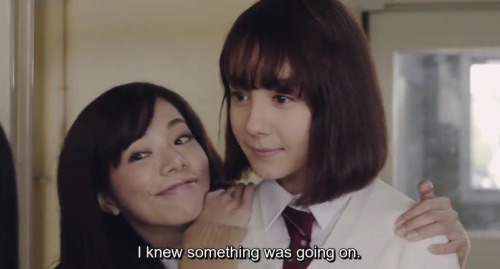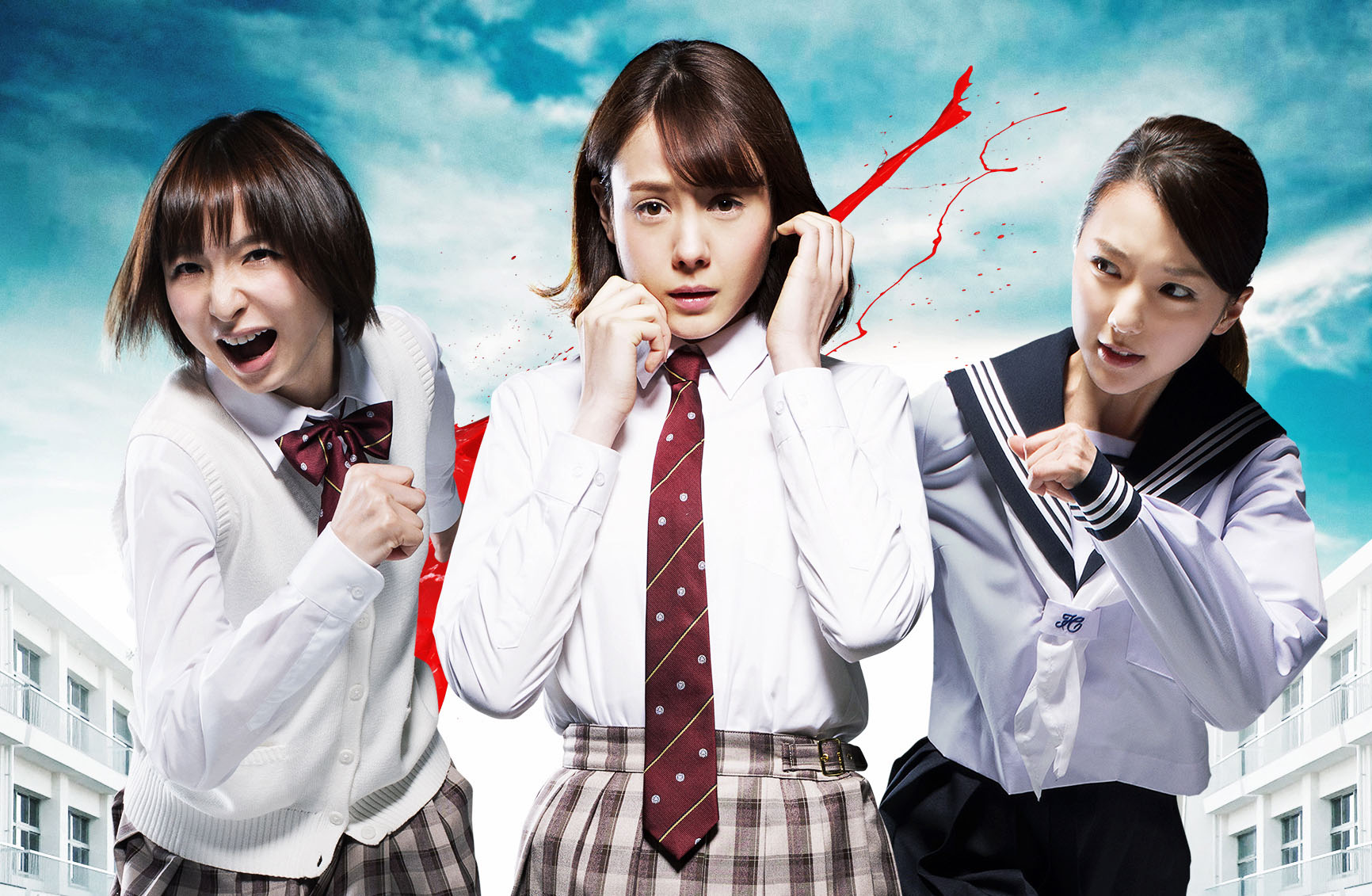You guys are unbelievable. So unbelievable, I’m going to stop and recount the ways. A little over a year ago I stood up the Questions section of the site in order to let you guys recommend movies for me to watch, review, and deconstruct. (THiNC. Pro-tip, the red tab at the bottom of the page will let you get to the Questions section, and will allow you to add a movie to talk about.) And in the past year or so, since that section of the site went live, you guys have recommended something like 230 movies. (Incidentally I have reviewed over half of them.) 230 gems. 230 movies that are surprisingly complicated and interesting from beginning to end. But in those recommendations for us all are gems like Starfish (OMG), Faults, 41 (the director of which I am currently interviewing), Buster Mal’s Heart, The Kindergarten Teacher (wow), The Sound of My Voice, and on and on I could go. Heck, you guys would do well to even peruse the ones I haven’t been able to get to yet. There are plenty of gems there as well. Whenever I find myself on a plane with nothing to watch, I flip through the list, and see if anything strikes my fancy. And more often than not, you guys blow my mind. And so, here we go: Japanese Movie Tag or Riaru Onigokko Unpacked…
Today I bring you another one of those recommendations. Today’s is brought to us by PhilR. THANKS PHIL!! Tag, or Riaru Onigokko, is a Japanese movie that is so wild, and so hilariously bloody, as to take one’s breath away. It’s bloody, and yet, funny. It’s dark, and yet sunny. It’s a weird juxtaposition. Tag came out in 2015, and comes from the director Sion Sono. Tag sort of runs in the same crazy school of thought as Kinji Fukasaku’s Battle Royale, (yet another movie recommendation you guys brought) if you’ve seen that. Anyway, this movie isn’t going to be for everyone. You will need to be OK with plenty of obvious fake blood spraying everywhere, nearly all the time. And you’ll need to be ready for crazy gruesome violence. But this movie was literally NOTHING like the movie I just reviewed the other day – Midsommar. I’m still reeling from that particular movie. No, this “horror” is a stylized, very comic book feel. And there is a reason for that. But alas, I have gone too far.
If you haven’t seen the film, but want to participate in the conversation below about said film, you can watch it here on Netflix. If you still aren’t certain you want to watch the film, here have a trailer.
Yes. I probably just offended half of you. Fine. Be offended by the fake prosthesis and the squirty squirt squirt blood. But this movie has a number of really good things to say about the state of the union of entertainment in the world today. And just how broken we all are. I promise. So, with those spoilers out of the bag – let’s get to this. And from here on out, I promise you nothing but spoilers. If you keep reading, and you have not seen this film yet, then I promise you….uh…I promise you…uh, that your eyeballs will melt out of your skull, and an Emu will come and eat them off the floor where their gelatinous masses will fall to rest. Or something. Just don’t do it.
Japanese Film Tag Walk Through
The movie has a cleverly repetitive cadence to the proceedings. It goes something like this:
- Act 1 – Mitsuko’s School
- Act 2 – Keiko’s Wedding
- Act 3 – Izumi’s Race
- Man’s World
- Denouement
Act 1, 2, & 3, all unfold in similar, yet disjointedly fashions. Mitsuko, sitting on a bus, drops her pen, bends over to pick it up, and the bus is sliced in half, like a cross-cut loaf of bread.

In Act 2, Mitsuko becomes Keiko, and this time she is a bride, on her wedding day. And as she heads into the chapel, the adoring women (always women in Act 1, 2, & 3) flip into a murderous rage. Surviving the onslaught we head to Act 3.
Act 3, Keiko becomes Izumi. And her running from her assassins in Act 2 converts into a running race. She is a running prodigy. Izumi is then being encouraged by her friends to remember her speed, and her abilities. As she begins to gain her legs, assassins come, ready to kill her. And like the previous two times, Izumi kills and dodges her would be murderers.
Along the way we are given the keys to solve the puzzle that is Tag early and often. Mitsuko/Keiko/Izumi is told that the only way to break free from fate is by an act of surprising daring. So surprising as to catch fate off guard. We also are given a hint that the world we are watching isn’t what it seems. That there are people who are watching, and that there was something else going on here that we don’t really understand.
Well, Izumi is told by her friend and guide that she has to murder her in order to make it past. And when she does, she escapes through into a world called “Man’s World.” Here we see nothing but big grunting sweating men at work. Men cooking food. Working in the street. She notices that men are lewdly talking about a game called Tag, with her on the poster, whose latest incarnation is a 3D Virtual Reality experience. Eventually Izumi makes it to a place where she begins to see numerous full size replicas of her friends that we met three different times, and also a replica of herself.
There is an old man here who tells her that she has jumped 150 years into the future. That, as a young man, when she died, he stole her DNA (and the DNA of all her friends) and recreated her into this 3D game. A younger version of himself appears and climbs onto a bed. She is told by the old man that she is to succumb to her destiny, which would then complete his last and greatest wish, which was to sleep with her. But instead, Mitsuko attacks the younger man, and as she does, she screams that he has to stop playing with toys. And as she is attacking him, she remembers her friend’s comments about doing something surprising to trick fate. And with that, she commits suicide by stabbing herself. And then, as the memory of the three different scenarios comes back to her, she commits suicide in each of them as well. On the bus. At the chapel. And at the marathon. Thus taking away the power of the gamer in each of these violent scenarios.

Tag as Morality Play
Morality Play: a kind of drama with personified abstract qualities as the main characters and presenting a lesson about good conduct and character, popular in the 15th and early 16th centuries.
One of the major flaws of this movie is the heavy handedness with which the movie tells us its moral, and yet there is a distinct lack in the telling. But could it be that this was intentional? We know that these three scenarios are straight out of a video game. Right? Everyone understood this before the movie told had to say it out loud, no? The surreal idyllicness of the situations and the scenarios. The kitchyness with which everything plays out. The sunlight, the feathers dropping, the fakeness of the deaths, and the raw silliness of everything. It had to be fake. No director is this bad, not unless he is emulating something else…doing something else. And then the recurring pattern (the levels of the game) also tells us this. Add on the overtly violent end of each level, and you should have been yelling at your screen. This is a morality play. No. It’s not a morality play, it’s a Morality Video Game Movie. It’s a movie, of a video game, telling a morality tale to the people watching.
When Mitsuko realizes what is happening, and wanders into the lair of her creator, she fights back by refusing the players, and the creator, the sick joy that they had been slathering in by committing suicide. This takes away the players ability to control her. It takes away the gratification that the player has been having by controlling her throughout.
Japanese Movie Tag or Riaru Onigokko Unpacked
But I ask you this, a movie, which tells the story of an objectified individual who has had their DNA stolen…is that much better than a video game that has done the same thing? It’s a complicated question. By raising the issue of the objectification of women in video games, and if they do it by objectifying and dehumanizing the women, is that much better? But I have to say that I agree with the overall message. The proclamation that women shouldn’t be used for the personal pleasure of players in Man’s World is a good one. And simultaneously, there have been some that have identified with the messaging, and being “supportive [of the] message it gave about women fighting against gender stereotypes.” Sort of a a Yuri Metaphor. Which tells you that this movie is a complex kaleidoscope of interpretations embedded within it.
Even so, I’m conflicted on this one. I thought Tag was a funny movie. It was obvious from just minutes in what it was that the movie was trying to do. The campiness of the blood, the campiness of the violence, just made me giggle in its stylized fantasy-land. I also agreed with the traveling 15th century minstrel, who had the honor of telling us our tale. But the fact that we aren’t living in 15th Century England makes me a little critical of movie over all. And yet, I’m sympathetic with its story and the lessons they would have us learn.
I don’t know, what did you think of it?
Edited by: CY



